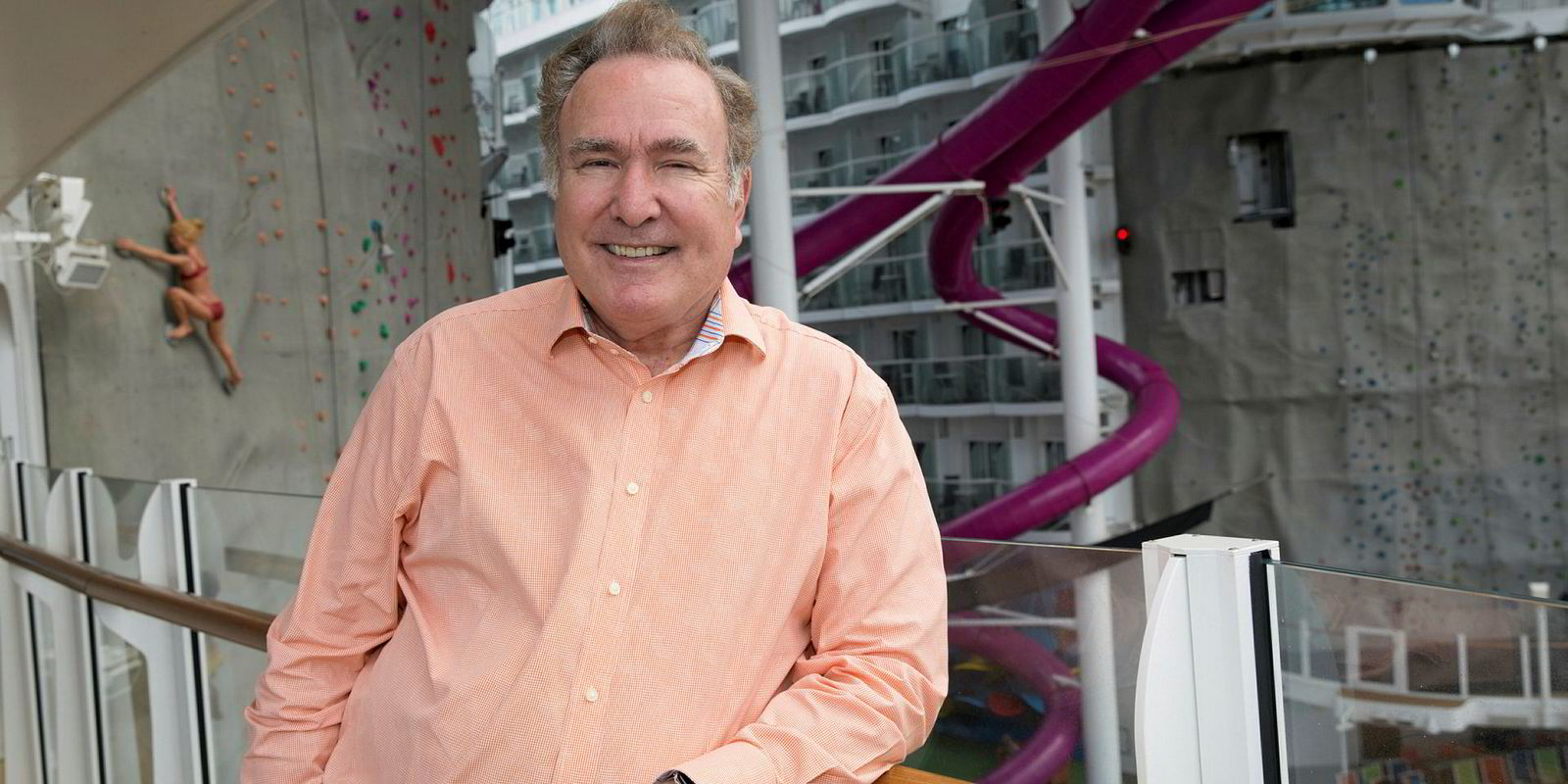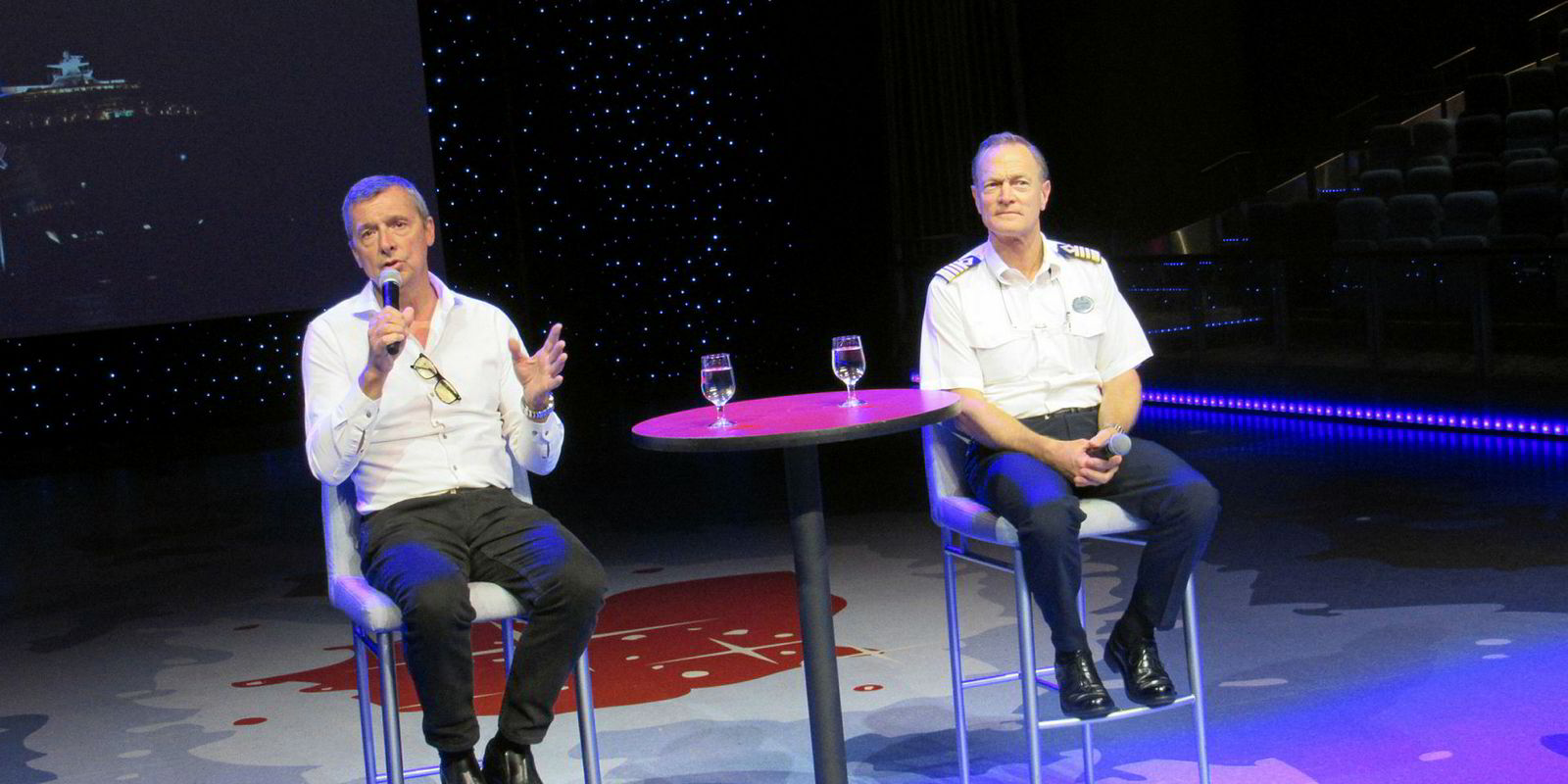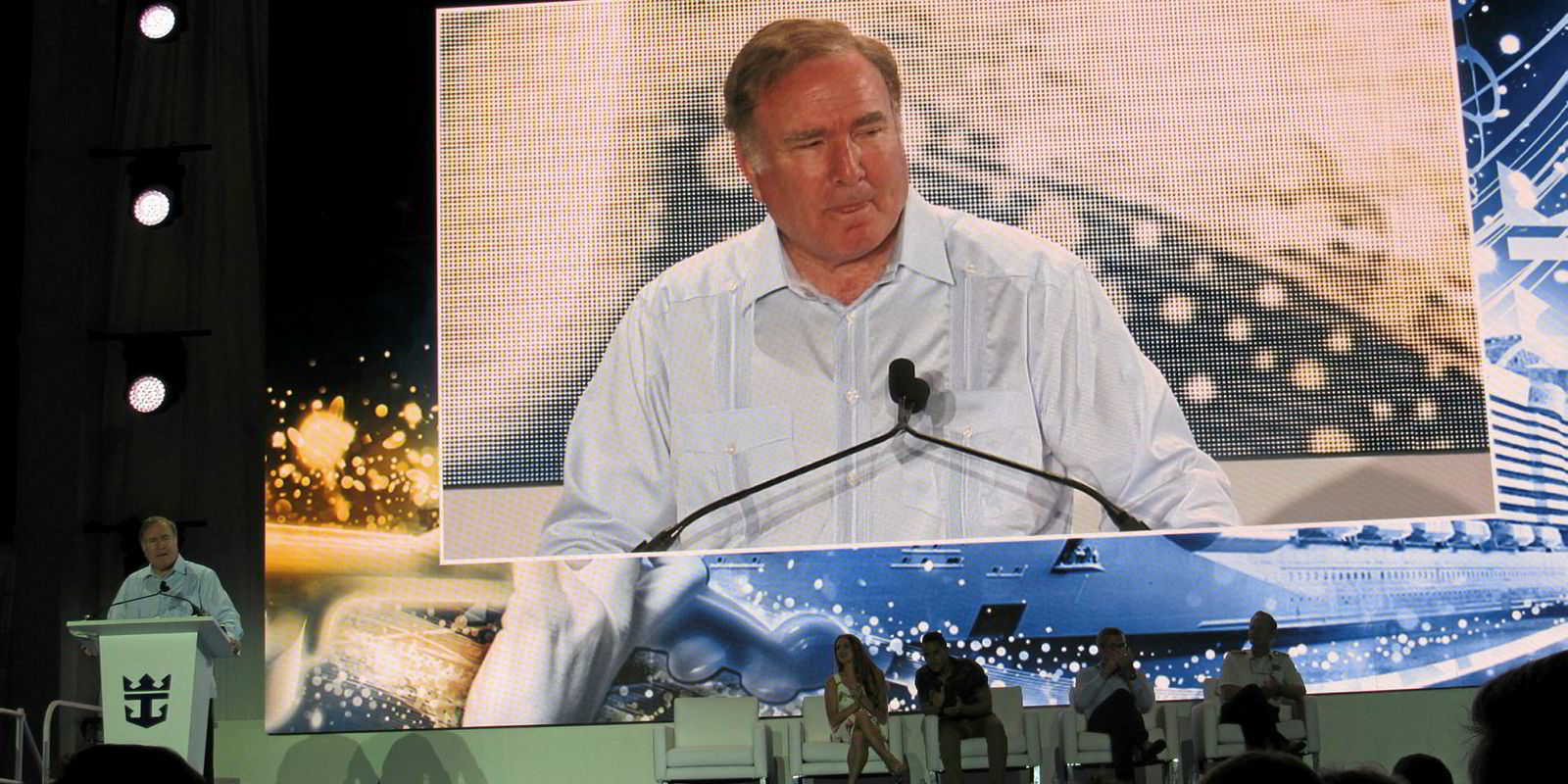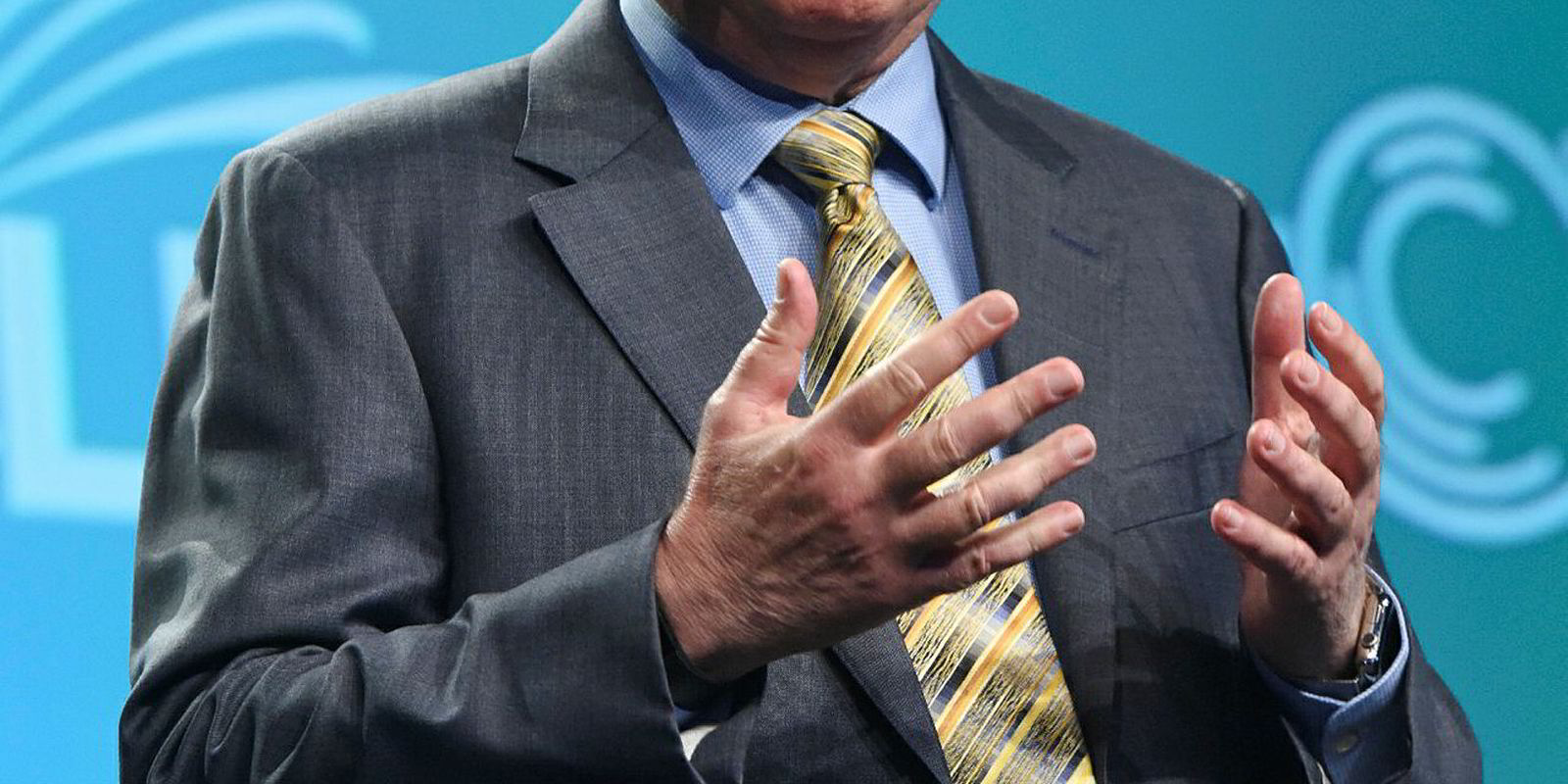Royal Caribbean Cruises keeps Mother Nature well on the bow, from using tiny air bubbles to freezing rubbish in its efforts to protect the environment.
“There is a consciousness of the need for sustainability throughout the company,” chairman and chief executive Richard Fain tells TW+ onboard the 228,081-gt Symphony of the Seas, the world’s largest cruiseship.
“In the end, you can set up a certain amount of rules and regulations and processes, but it really depends on our people to make it happen.”
In 2014, Fain received the Federal Maritime Commission’s Earth Day Award for ship technology innovations and practices such as recycling and using energy-efficient lighting.
He was also recognised for partnering University of Miami’s Rosenstiel School of Marine and Atmospheric Science to advance bilge water treatment and reduce fuel use. “I was particularly pleased because that came from the federal US government, and the Federal Maritime Commission obviously has tremendous credibility,” he says.
The Symphony of the Seas (built 2018) is 30% more energy-efficient than its nine-year-old, 225,282-gt sistership Oasis of the Seas, thanks to new hull design and those tiny bubbles. The bow produces millions of microscopic air bubbles that flow along the entire hull bottom to reduce friction with the water.
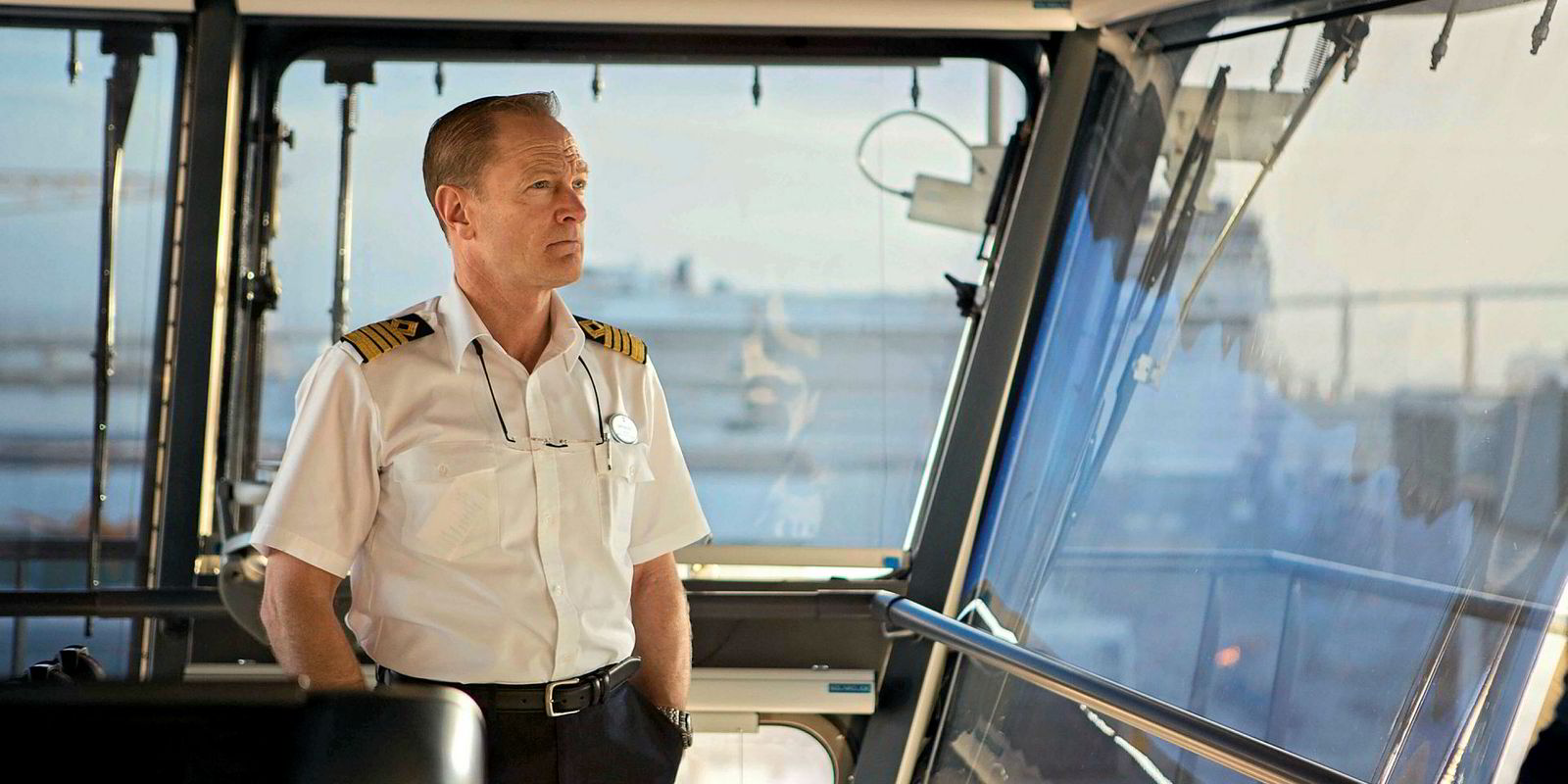
“People have talked about bubble technology for many years but it was never very successful,” Fain says. “I like to say the ship floats on air.”
In the past, the bubbles would float away from the hull and pop in the air because they had too much buoyancy.
“The team came up with a solution that would blow microscopic bubbles, which were more likely to stay along the hull bottom and create a cushion of air,” Fain explains.
Royal Caribbean’s engineers realised they could keep the bubbles tiny — and under the hull — by cooling them before release from the bubble-maker in the bow.
A new hull design also contributes greatly to the heightened efficiency, says Captain Rob Hempstead, the Symphony of the Seas’ master.
“All of the benefits we get on fuel consumption or energy reduction after we put the ship into operation are quite minimal, but the design of the hull is a huge feature in terms of the fuel that is consumed by the ship,” he says. “There’s a lot to that hull design.”
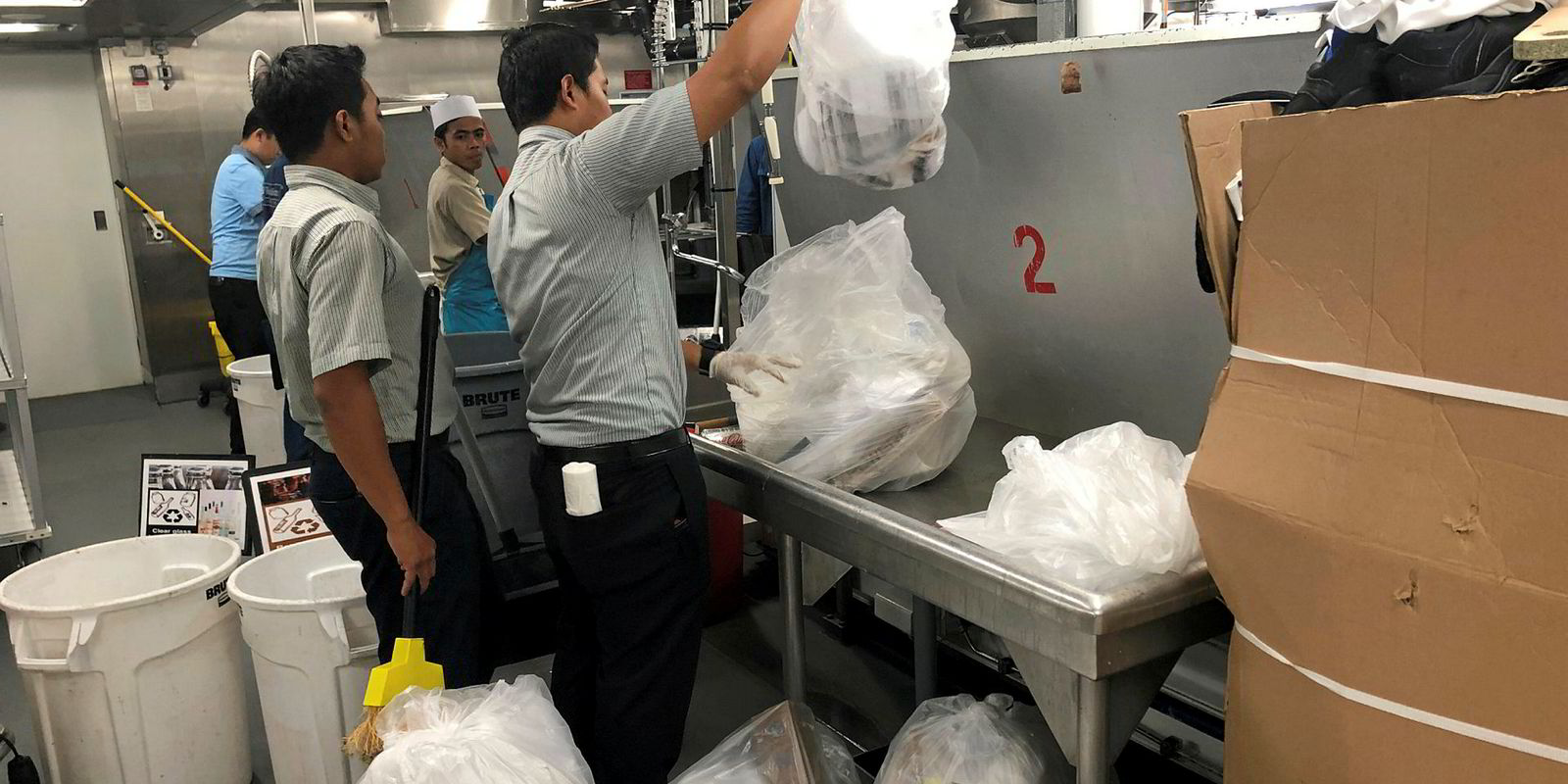
Other energy-saving features include specially designed propellers, a steam turbine that turns smokestack heat into electricity, advanced silicon paints and LED lighting. “It’s all incremental,” Hempstead says.
“The propulsion system is taking up a majority of it, so the focus is there, but the hydrodynamic design of the ship is half-science and half-art.”
Royal Caribbean studies hull design at the Maritime Research Institute Netherlands by sailing scale ship models in its half-mile tank in Wageningen.
“They can do all sorts of things that we can simulate. Those measurements are taken and adjustments are made and it’s brought back to design and construction,” Hempstead says.
“It’s really a lot of work that goes into that, and amazing is the result; 30% is very significant.”
The company also produces an annual sustainability report that looks into how it manages its relationship with the environment.
“We have a partnership with the World Wildlife Fund where we agreed to our sustainability targets over time,” Royal Caribbean International president and chief executive Michael Bayley says.
“If you know the WWF, they’re pretty strict about these partnerships they create with companies. We did go through a process of agreeing to emission reduction, energy management, the food supply chain and the sustainability of the supply chain.”
The company’s environmental stewardship efforts do not stop with hull design. Workers toil away below decks recycling rubbish and scrutinising engine performance.
The Symphony of the Seas’ six diesel-electric engines, which produce a total of 100 megawatts, are watched constantly via walls of screens within an engine control room.
“If you’ve ever been to the bridge, a lot of people call that the brains and the eyes. Well, this is the heart,” says Nick Rose, the company’s director of environmental programmes, safety and health.
“The ship does not operate or move without this room and the equipment which this room handles.”
Only four engines ever run at one time, to allow for redundancies in the event of breakdowns and annual overhauls.
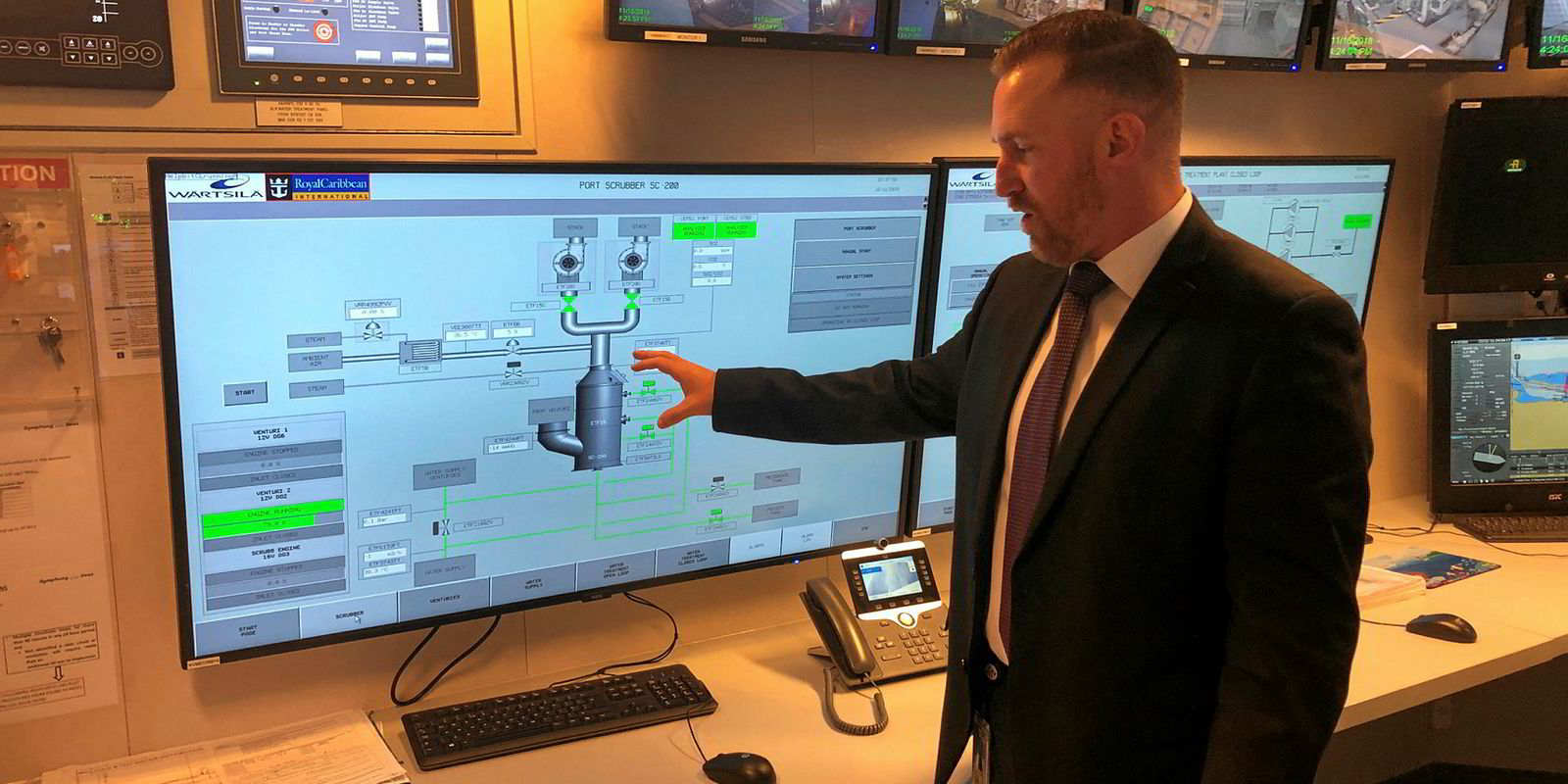
The ship also has six “hybrid” exhaust gas scrubbers that can run as either open-loop or closed-loop systems.
“Having the capability to switch from open-loop to closed-loop scrubbers was twice as expensive but we thought it was the prudent thing to do,” Fain says.
Advanced emission purification devices, as Royal Caribbean likes to call them, require “good maintenance” but have not broken down since they were introduced in 2010, he adds.
The company plans to have scrubbers on two-thirds of its fleet by 2020, with the rest using sulphur-free LNG.
Liquid waste is handled through an advanced wastewater purification system, which uses a bioreactor and filtration system to purify water for on-land disposal.
Meanwhile, an oily water separator removes fuel oil residue from the ship’s water supply for collection onshore.
Performance of these systems is closely monitored in the engine control room, which leads into the ship’s second area of environmental stewardship: the waste management room.
This area handles about 100 cubic metres a day of solid waste, three-quarters of which is sorted for onshore recycling, according to Andrew England, the vessel’s environmental officer.
“Every piece of waste comes down to here, where it is segregated, sorted, compacted, crushed, recycled or landed ashore in Miami to be recycled or taken for waste-to-energy,” he says.
Disposable waste is kept in a walk-in refrigerator for sanitary reasons before being incinerated onboard or on land, as law allows. “We have the coolest garbage at sea!” Fain boasts.
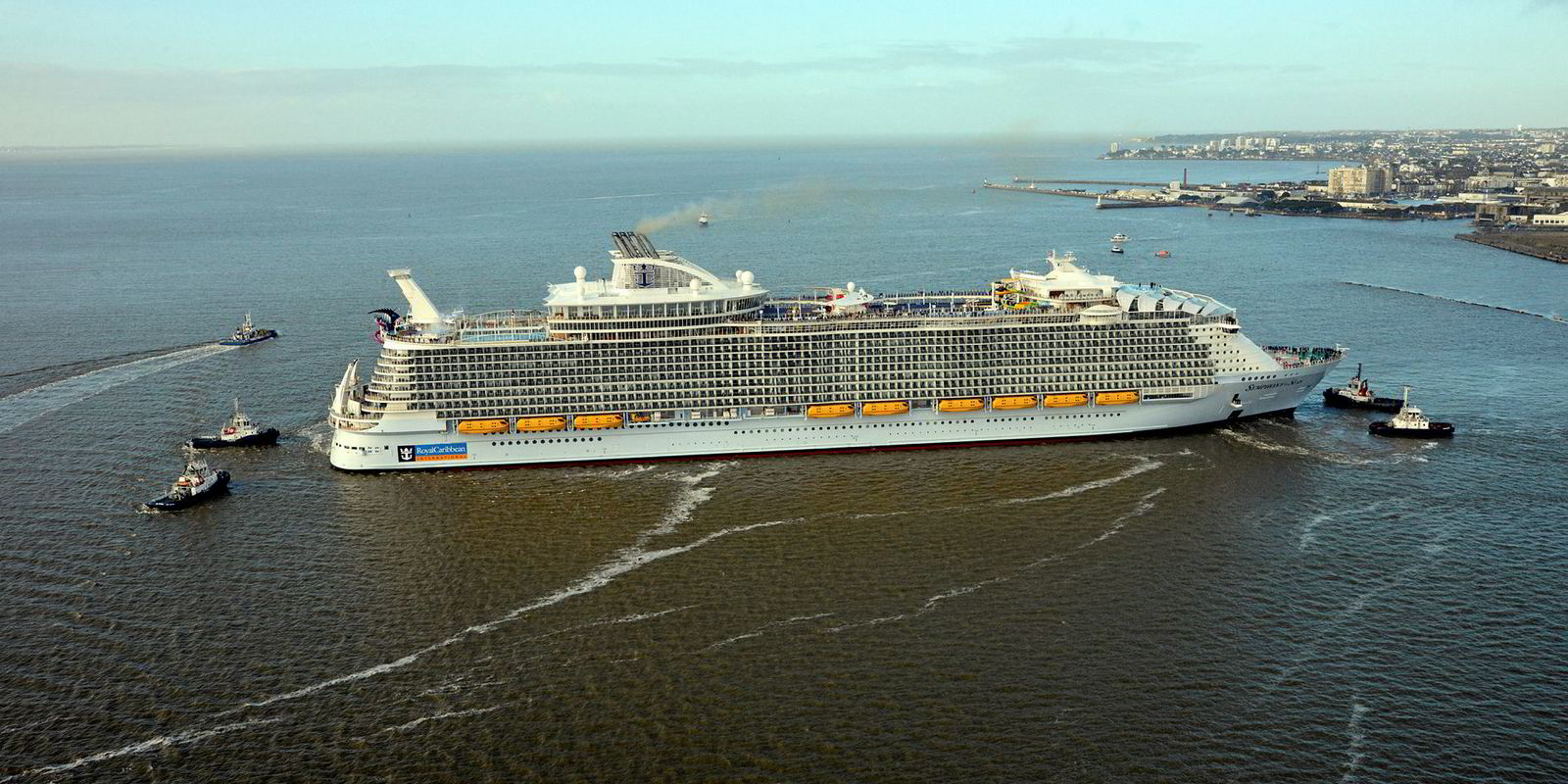
Every neighbourhood comes with sea views
Richard Fain is building “cities on the sea” to please his passengers.
“As people’s tastes have changed, we’ve seen that people want more things to do,” he says. “What we realised is people are looking for less of a resort and more of a city.”
The Symphony of the Seas, Royal Caribbean’s newest ship, offers seven “neighbourhoods” with activities ranging from dining to swimming, sports and theatre.
“One of the characteristics of a city is that it’s easy to find your way around because things are bunched into neighbourhoods,” Fain says. “It creates a critical mass of activities.”
The first cruiseships resembled yachts but then evolved into “floating resorts” as cruise goers yearned for more onboard activities.
Interest in various forms of fun has grown over the years, leaving, he believes, only one option to keep vacationers walking across the gangway: build a city on the sea.
Those neighbourhoods are dotted around 15 passenger decks (the ship has 18 in all) on a floating, mobile superstructure that is 362 metres long, 66 metres wide and 72.5 metres high.
It even has a “Central Park”, lined with restaurants, shops and 20,000 live plants.

Such dimensions raise the question, especially as this vessel and the company’s three other Oasis-class ships lead the cruise world in size: will Royal Caribbean Cruises come out with an even bigger ship?
“One thing I’ve learnt working at Royal Caribbean is never say never, because the team constantly comes up with new and better things that never occurred to me,” Fain replies.
“I never expected that we would have these four large vessels but the world has reacted so positively that we simply had to go forward with [Symphony of the Seas].
“It’s really a question of: ‘Is there a reason to build a larger ship?’ It’s entirely possible.”
Royal Caribbean realised decades ago that ship size is limited only by customer demand when it enlarged the 1990-built Empress of the Seas’ capacity from 700 passengers to 1,040.
Royal Caribbean was concerned that passengers might find the vessel too big but it threw the dice anyway. “We concluded it was a risk that we could overcome, so we built the ship at 1,040 passengers and it has been successful beyond our wildest imagination.”
Fain notes that Royal Caribbean also offers much smaller vessels for more intimate cruises, such as several owned by Silversea Cruises.
His company took a two-thirds stake in the luxury expedition cruise outfit and has ordered three newbuildings, including a 100-passenger ship for the Galapagos Islands.
